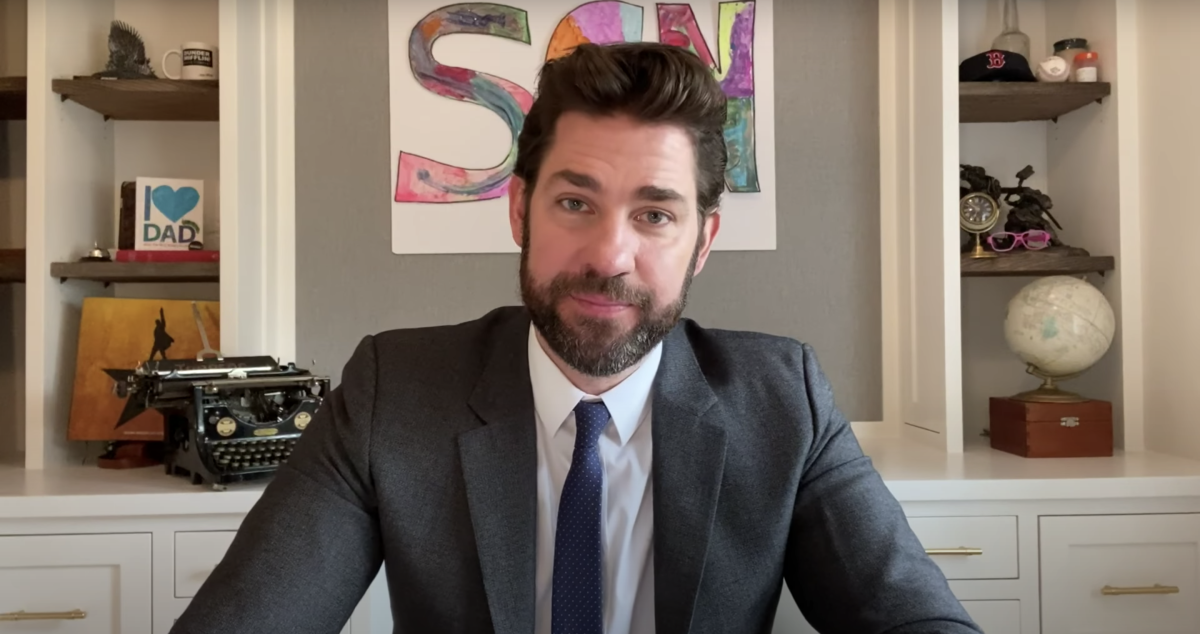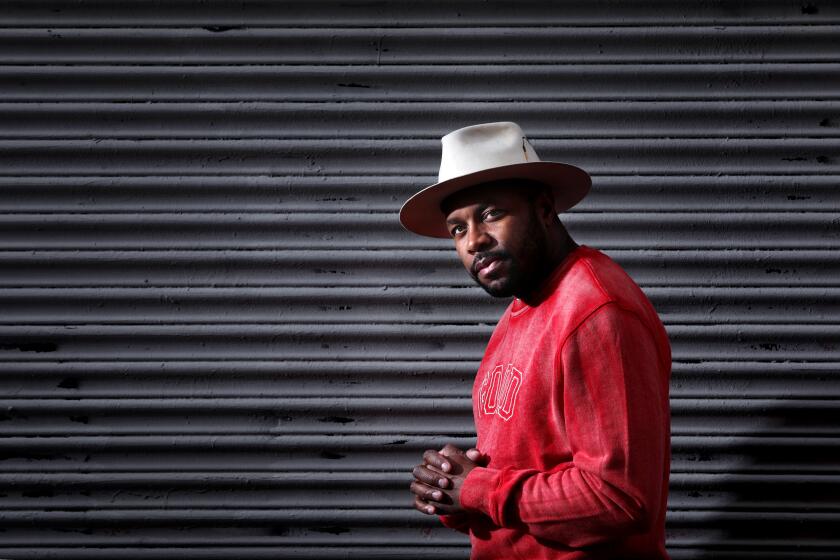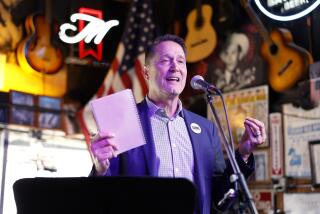Coronavirus drove a boom in virtual content; to protect artists, copyright law must catch up

On April 19, Rainn Wilson (a.k.a. Dwight Schrute) appeared on John Krasinski’s YouTube show “Some Good News,” and warned his former “Office” cast member not to stream a Chance the Rapper song without first getting permission from the artist or the publishing company. Krasinski then brought Chance himself onto the show, and he gave the green light.
The COVID-19 pandemic has generated this type of abundant good will across media and entertainment businesses: DJs are spinning music free online; Alex “A-Rod” Rodriguez and Jennifer Lopez are posting dances to popular songs on TikTok, Broadway performers are singing tributes to Stephen Sondheim on YouTube, art gallery exhibitions have gone virtual and professional athletes are playing video games on ESPN.
But all these well-intentioned efforts have powerful implications in terms of intellectual property — presenting perilous obstacles as well as promising opportunities. Even before pandemic pushed our lives online, our digital moment was crying out for a new, more streamlined, simplified approach to managing this copyright can of worms.
Streaming images, video, music and books turn every interaction and event into a performance, display or broadcast of intellectual property. And the law requires licenses for such streaming to protect the content of the creators.
So what happens when copyright holders start tracking down those DJs beneficently spinning unlicensed tunes, those celebrities blithely dancing to unlicensed songs on TikTok? When copyright lawsuits crack down on those streaming unlicensed video and music over Zoom and YouTube?
To be sure, the pivot to online virtual experiences is likely to result in some valuable innovation. The pandemic has already prompted companies to think creatively about how to re-imagine live events for an audience stuck at home.
WME agent Richard Weitz’s “Quarantunes” events are more than just the hottest ticket in town; they’re a model for celebrity fundraising during COVID-19.
With such gatherings as South by Southwest, Lollapalooza and Burning Man forced to go virtual, adding online content will become essential to keeping these businesses alive and keeping audiences engaged. Such organizations will have to come up with original ways to expand their reach, much as NBC has done with the Olympics — creating short documentaries, providing dynamic music to accompany footage and replaying performances on multiple platforms.
But these new business models and potential profit centers are on a collision course with owners of copyrights. A proliferation of more sophisticated production values will require more complicated IP licensing for otherwise live-event producers not accustomed to handling rights in the digital sphere.
Putting a camera on a panel of talking heads at SXSW will no longer be enough for people sitting at home and paying to participate remotely. Organizers will have to make the panel as entertaining as a TV show, with music, possibly green screens and other copyrighted works to engage audiences.
Copyright theft is nothing new — from PowerPoint presentations that feature unlicensed New Yorker cartoons to spin classes that pump to the beat of unlicensed pop songs, content owners have long struggled to enforce the laws that require rights clearance.
But at a time when the term “live” is being redefined by the day, licensing becomes far less straightforward and potentially more costly. Creating licenses for events that are actually Internet broadcasts raises a host of thorny questions. Which territories are receiving the broadcasts? How are broadcasters compensated (subscriptions, tickets, advertisements)? What happens if audience members re-cast the content? Should licensing fees be calculated by the number of streams, page views or each single event? Should licenses be exclusive or nonexclusive?
Streaming music that is synched to video is more complicated to clear than music on the radio, because the compulsory licensing of music that applies to terrestrial and internet radio does not apply to music synched to video. Rather than just pay a performing rights organization like ASCAP or BMI, producers have to track down the copyright holders and negotiate licenses. That process is time consuming, frustrating and usually more expensive than budgets permit. With many more businesses in the rights clearance game, people may look for shortcuts — but that is a perilous approach.
Instagram Live DJ sets from D-Nice have become sensations, with celebs from Michelle Obama to Drake joining tens of thousands of quarantined viewers.
Now, more than three months into the COVID-19 quarantine, copyright holders are getting antsy about the casual spread of their content. The National Music Publishers Assn. in April said it was gearing up to sue TikTok for copyright infringement because more than 50% of the music on the platform — including that of Billie Eilish and Taylor Swift — has not been cleared.
In May, publishers sued the San Francisco-based NGO Internet Archive for making millions of copyrighted books freely available during the pandemic — citing a “national emergency.” The suit was quickly settled when the Internet Archive stopped its infringing practices.
In the days of Napster in the early aughts, unlicensed sharing of audio files almost destroyed the music business. It took years, millions of dollars and dozens of lawsuits by the record industry before Napster and its progeny waved the white flag, leaving room for Apple and others to create an easy licensing system for personal use of music over the internet via iPods.
To avoid a similar period of Wild West piracy and prosecution, stakeholders should work toward developing a nimble and manageable virtual content distribution ecosystem.
We need to create an easy policing system, such as copyright registries, user-friendly online legal content marketplaces (like Apple music) or a statute that provides for compulsory licensing of sync licenses like ASCAP and BMI do for music plays in public places. Copyright owners could deploy anti-piracy software to troll the internet for unlicensed works — this tech is already within sight — automatically identifying and even charging the infringers with financial penalties or issuing licenses.
Apple and Spotify could expand their licensing capacity to public performances of music, podcasts, videos and other content. Photography companies like Getty Images could simplify the licensing of copyrighted works for public performances so that average people or midlevel artists could acquire rights and clear content without spending a fortune on lawyers and becoming mired in legal minutiae.
After selling “Some Good News” to CBS, John Krasinski told fellow “Office” alum Rainn Wilson that he’ll still be involved in the show, sometimes even as host.
Now that multimedia streaming — whether in the form of simple TikToks or sophisticated virtual productions — is going online, this is the time for the technology industry, the legal profession, Congress and Hollywood to work together to allow a free flow of creative content while guarding against a free-for-all.
We have to give credit — and remuneration — where they are due, because people like Krasinski will not be able to bring the artist on the show every time, especially now that his show will be airing on CBS. The whole rights clearance process needs to get easier.
In this age of COVID-19, we have the opportunity to avoid the chaos of the past, urging organizations across the board — whether individual performers, arts platforms, small businesses or major corporations — to start thinking and behaving like the multimedia companies they have abruptly become.
Rather than trying to put the genie back in the bottle, we can begin to harness the powers of technology and the law and find a way forward for creators, distributors, licensors and audiences — protecting intellectual property, even as we also make the most of it.
Klaris is chief executive of KlarisIP and managing partner of Klaris Law. He has been an adjunct professor at Columbia Law School since 2005.
More to Read
Inside the business of entertainment
The Wide Shot brings you news, analysis and insights on everything from streaming wars to production — and what it all means for the future.
You may occasionally receive promotional content from the Los Angeles Times.











